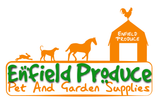Laying Hens for Sale at Sydney Pet Store. Centrally located at Enfield (Near Strathfield)
Availability: To confirm price and availability, please call the Enfield Store on 97475713 before visiting in-store. Please do NOT email us regarding availability, as these emails are answered from a different location from the store.
How to Buy: All our Chickens are for in-store pickup and purchase only. No delivery available.
Price: Our prices are very competitive but do vary from batch to batch. Please call the store to confirm the current price.
Types of Chickens available most of the time: Isa Brown Hens, Black Australorps, White Leghorn, Baby Isa Browns & Ducklings.
Store Address: 56 Coronation Pde, Enfield NSW. (near Strathfield) 02 97475713
Suggestions for Caring for Chickens.
Caring for chickens in Australia requires attention to climate, predators, local regulations, and proper nutrition. Here are some suggestions. Also, please note the links in orange text to different poultry product pages if you require any specific product. We stock an extensive range of poultry supplies, including chicken coops, organic feed, feeders, brooders, incubators and much more.
1. Choosing the Right Chickens
Suggested Breeds for different climates:
For Hot Climates: Leghorns, Australorps, Isa Browns.
For Cold Climates: Orpingtons, Plymouth Rocks, Wyandottes.
Suggested Breeds for egg laying:
The best egg-laying breed is Isa Brown, and Silkies tend to lay the fewest eggs relative to most other breeds.
For Dual-Purpose Breeds, i.e., for both eggs and meat: Rhode Island Reds, Sussex.
2. Housing & Shelter
Coop Design: Chicken Coops should be designed with these considerations
- Well-ventilated but draught-free.
- Protection from rain, extreme sun, and wind.
- Include roosting perches (30cm per bird)
- Include nest boxes (1 box per 3-4 hens, filled with straw or wood shavings)
Cater for Run & Free-Ranging:
- Secure fencing to prevent escapes and protect from predators.
- Provide shaded areas for hot weather.
3. Feeding & Nutrition
Balanced Diet:
- Layer pellets or crumbles for hens are a good, complete feed option, preventing birds from selecting only their favourites at the expense of nutritional completeness. Alternatively, a good scratch mix can also be used.
- Grains, such as wheat or corn, can be used as a supplement.
- Fresh fruit & vegetables, but avoid avocado, chocolate, raw beans, and onion.
- Shell grit or calgrit for digestion, especially when free-ranging.
Water:
- Always provide clean, fresh water.
- Keep water cool in hot weather.
- Consider a specific poultry waterer, to keep water clean and prevent water waste.
Treats & Scraps:
- Small amounts of cooked rice, pasta, oats, dried mealworms or live mealworms.
4. Health & Disease Prevention
Common Issues:
- Mites & Lice: Use diatomaceous earth, poultry dust or pestene powder.
- Worms: Regular worming every 3-6 months with a dedicated chicken wormer that's safe for egg layers.
- Respiratory Infections: Keep coops dry & ventilated
- Egg Binding: Provide calcium (crushed eggshells, shell grit or calgrit)
Biosecurity:
- Quarantine new birds for 2 weeks
- Keep feed away from wild birds
- Clean and disinfect the coop regularly
5. Climate Considerations in Australia
-
Hot Weather (Summer):
- Provide shade & ventilation
- Add electrolytes to water
- Freeze water bottles for cooling
-
Cold Weather (Winter):
- Ensure dry bedding
- Block strong winds in the coop
- Provide high-energy foods like grains
6. Predators & Protection
- Common Predators: Foxes, snakes, hawks, dogs, cats
-
Preventive Measures:
- Secure coop with heavy-gauge wire
- Bury the wire 30cm deep to stop digging predators
- Lock the coop at night
- Use motion sensor lights
7. Egg Production & Collection
- Hens lay best with 12-14 hours of daylight
- Collect eggs daily to prevent breakage & pests
- Store eggs in a cool, dry place (refrigerate if needed)
8. Legal Considerations & Local Regulations
- Check local council rules for backyard chickens
- Roosters may be banned in urban areas
- Follow biosecurity laws (especially during disease outbreaks)
9. Raising Chicks
-
Brooder Setup:
- Heat source (heat lamp or heating plate)
- Chick starter feed
- Shallow water dish
-
Growth Stages:
- Heat reduction each week (start at 35°C, lower by 3-5°C per week)
- Transition to adult feed at 16-18 weeks
